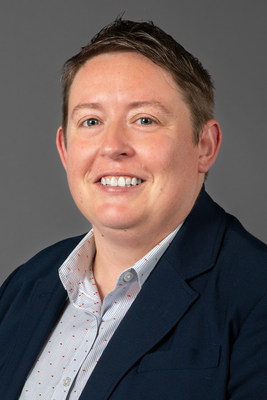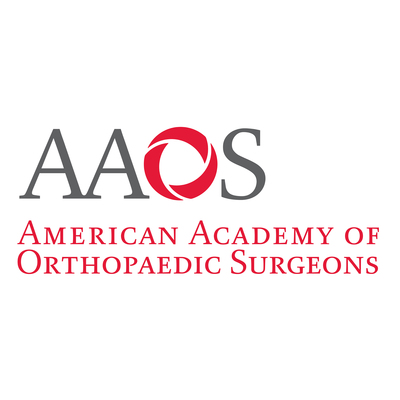2022 Kappa Delta Young Investigator Award presented to Alayna E. Loiselle, PhD, for significant research in tendon cell biology and tendon injury response
ROSEMONT, Ill., Jan. 31, 2022 /PRNewswire/ -- Alayna E. Loiselle, PhD, was awarded the 2022 Kappa Delta Young Investigator Award for her research on the cell biology of the tendon and how different cells contribute to the tendon healing process. The award recognizes outstanding clinical research related to musculoskeletal disease or injury by investigators under 40 years old. In 2015, Dr. Loiselle established the Loiselle Lab for Tendon Therapeutics in the Center for Musculoskeletal Research at the University of Rochester Medical Center in Rochester, New York to study tendon function and healing to identify promising therapies. Since then, Dr. Loiselle's research in the lab has focused on identifying potential therapeutics through the development of mouse models that advance the understanding of how the tendon heals.
Acute tendon injuries are very common, with approximately 300,000 surgical tendon repairs per year in the United States. However, tendons are prone to heal with scar tissue, restricting tendon movement and the restoration of mechanical properties. Once injured, a tendon never fully recovers, leaving it at an increased risk of reinjury. Currently, there are no consensus biological or pharmacological approaches to improve tendon healing and function.
"Tendons are incredibly strong structures and are pretty resistant to damage until injured, when they respond with scar tissue, disrupting the healing process," said Dr. Loiselle, associate professor, Departments of Orthopaedics & Rehabilitation, Biomedical Engineering and Pathology & Laboratory Medicine at the University of Rochester Medical Center. "One area of focus in my lab has been to study the fundamentals, such as the cell composition of the tendon at baseline, as well as how it changes under different conditions, such as injury. Once we understand the composition and structure of the cell environment, as well as how it changes in different contexts, then we can begin to make more informed, thoughtful decisions to test different therapies to improve the healing process."
The Importance of the Cellular Environment
When Dr. Loiselle started her independent laboratory, she discovered that testing different therapies to enhance tendon healing was hindered by the lack of understanding of the cellular environment throughout the healing process. As the team began to manipulate signaling pathways in tendon in vivo, it became clear that they needed to understand how different cell populations within the tendon interacted with each other. Their efforts then shifted to defining the cellular environments of tendon homeostasis, healing, and tendon pathology to advise what translational therapies would be strong candidates.
After a tendon injury, the inflammatory phase begins and immune cells (e.g., neutrophils, macrophages) are recruited to the repair site. Immune cells are the prevalent cell population during acute inflammation, which is critical to the healing process. It then moves into the proliferative/granulation tissue phase, characterized by disorganized outer scar tissue consisting of extracellular matrix (ECM; structural support cells that regulate cellular growthi), and a highly organized inner bridge made up of tenocytes (a type of tendon cell) and collagen. While inflammation and ECM synthesis are critical for proper healing, persistent inflammation and excess ECM synthesis leads to scarring, resulting in mechanical and functional deficits in the tendon.
"One of the inherent challenges with tendons is that they're primarily a matrix tissue," said Dr. Loiselle. "In response to the injury, they make new extracellular matrix, but that matrix is not of a good enough quality, the composition isn't quite right, or it's not organized. Because the tendon is an elegant structure, it's difficult for the cells to make that again from scratch, mainly because we're not giving them the right cues."
Cell Roles in Tendon Healing
Scleraxis (Scx) is a transcription factor that is required for normal tendon development, and Scx-lineage cells are the predominant cell population with the tendon. However, the relationship and potential overlap between Scx-lineage cells and other tendon cell populations was unclear. Dr. Loiselle and her team were able to identify four distinct cell populations within the adult tendon during homeostasis: Scx+/ S100a4+ (51% of the total tendon cell population); Scx+/ S100a4- (17%); Scx-/ S100a4+ (20%); and Scx-/S100a4- (12%). This provided the first characterization of the cellular heterogeneity of the adult tendon.
The presence of the S100a4 cell population in the tendon was especially intriguing to Dr. Loiselle and her team, and they wanted to research its role in tendon healing further. Using mice studies, the team used S100a4+/- mice, finding that the tendons from these mice healed with improved range of motion and increased mechanical properties. These were surprising results as other approaches that decreased scar formation are typically associated with diminished mechanical properties. These findings, along with other studies, establish S100a4+/- as a novel model of mechanically superior, regenerative healing and can be leveraged as a potential therapeutic target.
Impact of Type II Diabetes on Tendon Healing
Type II diabetes is a prevalent risk factor for the development of tendon pathology, which can lead to pain, reduced flexibility, and diminished range of motion.ii It can also alter the tendon structure with more pronounced changes being associated with poorly controlled diabetes and the duration of the disease. These structural changes can lead to functional deficits, increased risk of tendon rupture and disruption to the healing process. How diabetes drives this disruption to tendons and tendon healing has been unknown.
Dr. Loiselle and her team utilized mice studies to determine if treating the diabetic status could prevent the progression of tendon pathology related to the disease. Mice were fed a high-fat diet (HFD) for 12 weeks to induce obesity/type II diabetes and then were switched to a low-fat diet (LFD). These mice quickly became metabolically normal, with their body weight, fasting blood glucose, glucose tolerance and body fat percentage mirroring non-diabetic controls. However, this did not prevent tendon pathology progression, as deficits in range of motion and mechanical properties were seen. Treating the systemic symptoms or resolving the status of type II diabetes wasn't enough to prevent tendon pathology from developing. Dr. Loiselle is exploring tendon-specific treatment approaches to treat tendon pathology.
"Type II diabetes causes issues with the tendon, both in the context of injury as well as day-to-day tendon homeostasis," said Dr. Loiselle. "Diabetic patients have tendons that aren't able to move as well, are stiffer, more prone to injury and have a healing response that is worse; however, we don't have a great idea of why this happens. Understanding how comorbidities, like type II diabetes, disrupts the homeostatic state of the tendon and influences the overall healing capacity is really important in managing these injuries and potentially prevent them in patients."
About the Kappa Delta Awards
In 1947, at its golden anniversary, the Kappa Delta Sorority established the Kappa Delta Research Fellowship in Orthopaedics, the first award ever created to honor achievements in the field of orthopaedic research. The first annual award, a single stipend of $1,000, was made available to the Academy in 1949 and presented at the AAOS meeting in 1950. The Kappa Delta Awards have been presented by the Academy to persons who have performed research in orthopaedic surgery that is of high significance and impact.
The sorority has since added two more awards and increased the award amounts to $20,000 each. Two awards are named for the sorority national past presidents who were instrumental in the creation of the awards: Elizabeth Winston Lanier, and Ann Doner Vaughn. The third is known as the Young Investigator Award. For more information about the manuscript submission process, please visit aaos.org/kappadelta.
Kappa Delta Foundation
Kappa Delta Sorority is a national organization for women with nearly 260,000 members, more than 500 chartered alumnae chapters and 169 active collegiate chapters. Established in 1981, the Kappa Delta Foundation is a 501(c)3 organization whose mission is to secure funds for the educational, leadership and charitable purposes of Kappa Delta Sorority. The foundation is supported by member donations and bequests that fund programs and initiatives such as scholarships, internships, grants and more. Kappa Delta National Headquarters is in Memphis, Tennessee. For more information, visit kappadelta.org/foundation.
About the AAOS
With more than 39,000 members, the American Academy of Orthopaedic Surgeons is the world's largest medical association of musculoskeletal specialists. The AAOS is the trusted leader in advancing musculoskeletal health. It provides the highest quality, most comprehensive education to help orthopaedic surgeons and allied health professionals at every career level best treat patients in their daily practices. The AAOS is the source for information on bone and joint conditions, treatments, and related musculoskeletal health care issues and it leads the health care discussion on advancing quality.
Follow the AAOS on Facebook, Twitter, LinkedIn, and Instagram.
Disclosure
Funding
- The research was supported by the National Institutes of Health (NIH)/ National Institute of Arthritis and Musculoskeletal and Skin Diseases (NIAMS) K01 AR068386 (to AEL), R01 AR073169 (to AEL), R01 AR077527 (to AEL), R21AR073961 (to AEL), F31 AR074815 (to Katherine Best, a PhD Student in the Loiselle Lab), F31 AR077398 (to Jess Ackerman, a PhD student in the Loiselle Lab), as well as resources provided by Center for Musculoskeletal Research at the University of Rochester, which is supported by T32 AR076950, P30 AR069655, and P30 AR061307.
|
____________________ |
|
i ScienceDirect. Extracellular Matrix. https://www.sciencedirect.com/topics/neuroscience/extracellular-matrix. Accessed 1/5/2022. |
|
ii Andres BM, Murrell GA. Treatment of tendinopathy: what works, what does not, and what is on the horizon. Clin Orthop Relat Res. 2008;466(7):1539-1554. https://www.ncbi.nlm.nih.gov/pmc/articles/PMC2505250/. Accessed 1/7/2022. |
![]() View original content to download multimedia:https://www.prnewswire.com/news-releases/2022-kappa-delta-young-investigator-award-presented-to-alayna-e-loiselle-phd-for-significant-research-in-tendon-cell-biology-and-tendon-injury-response-301471035.html
View original content to download multimedia:https://www.prnewswire.com/news-releases/2022-kappa-delta-young-investigator-award-presented-to-alayna-e-loiselle-phd-for-significant-research-in-tendon-cell-biology-and-tendon-injury-response-301471035.html
SOURCE American Academy of Orthopaedic Surgeons


